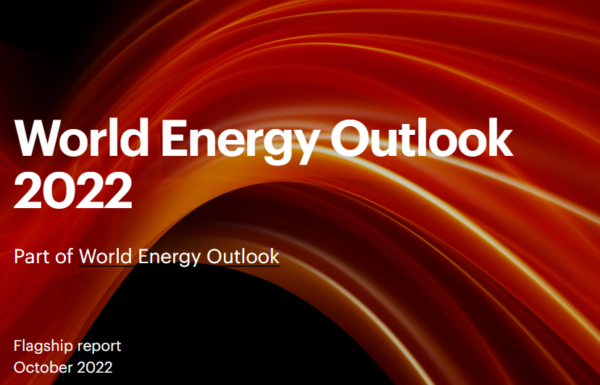On October 27th, the International Energy Agency (IEA) released the report “World Energy Outlook 2022”.
The World Energy Outlook (WEO) has been published every year since 1998. This year, the global energy crisis triggered by Russia’s invasion of Ukraine has brought attention to the energy security responses of governments around the world. In this report, the IEA shows analyses and projections of the impacts on global energy demand, energy security, climate goals, and economic development under three scenarios (STEPS: Stated Policies Scenario, APS: Announced Pledges Scenario, and NEZ: Net Zero Emissions by 2050).
Summary points from the World Energy Outlook 2022:
- New policies in major energy markets help propel annual clean energy investment to more than USD 2 trillion by 2030 in the STEPS, a rise of more than 50% from today, but to achieve the 1.5°C target, USD 4 trillion in investment is needed by 2030.
- As markets rebalance, renewables see sustained gains; the upside for coal from today’s crisis is temporary.
- International energy markets are undergoing a profound reorientation in the 2020s as countries adjust to the rupture of Russia-Europe flows.
- For the first time, a WEO scenario based on prevailing policy settings has global demand for each of the fossil fuels exhibiting a peak or plateau. Global CO2 emissions fall back slowly from a high point of 36.6 billion tonnes (36.6 Gt) per year to 32 billion tonnes (32 Gt) by 2050.
- Full achievement of all climate pledges would move the world towards safer ground, but there is still a large gap between today’s pledges and a stabilization of the rise in global temperatures around 1.5 °C.
- Supply chains for some key technologies – including batteries, solar PV and electrolysers – are expanding at rates that support greater global ambition.
- Stronger policies will be essential to drive the huge increase in energy investment that is needed to reduce the risks of future price spikes and volatility.
- Amid the major changes taking place, a new energy security paradigm is needed to ensure reliability and affordability while reducing emissions.
Although many countries are experiencing energy supply concerns and some countries are building or restarting coal-fired power plants, this increase in coal demand is temporary. Demand for fossil fuels, including coal, is expected to start declining before 2030 (especially coal demand is expected to peak out within the next few years, and oil in the mid-2030s). It is also noted that as the shift to renewable energy continues, energy security will shift from current fossil fuels (especially gas) to rare metals such as lithium, cobalt, and nickel.
As the IEA highlights in this report, we are entering a critical decade to achieve a more secure, sustainable, and affordable energy system.
Report Download:
World Energy Outlook 2022(Link)
Written / Published by: International Energy Agency (IEA)
Published on October 27, 2022

